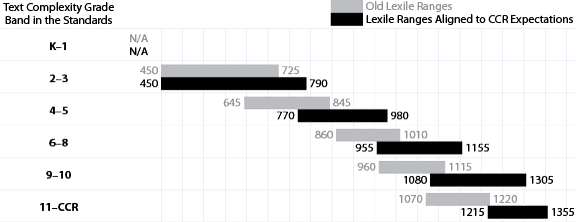We all have an idea of the kind of readers we want students to be—nose stuck in a book, begging for “just five more minutes” of reading time. But reality is much more diverse, and let’s face it, more interesting!
You’ve got the student that reads voraciously—if and only if it’s about dinosaurs. The one who wants to be reading Harry Potter but isn’t getting much off the page. And of course, the kids who resist reading much at all.
At the beginning of the year, you’ll want to know your students’ starting points so you’ll know how far they’ve grown come June. Here are four things you’ll want to know, and how to find and use each piece of information:
Their Reading Levels
Quantitative measures, including reading rate, accuracy and Lexile level, are helpful for setting a baseline, setting goals, measuring progress and matching students with books. Reading assessments, like Fountas and Pinnell or Dibels, will give you an idea of how students are currently accessing and understanding grade level text. The Common Core uses Lexile levels to define “grade level” text, so:
- This chart or this chart will help you convert Fountas and Pinnell levels into Lexile scores.
- The Dibels scores will tell you where students are in terms of grade level reading ability (here are resources for grades K–3 and grades 4–5).
- Once students have an assigned Lexile, find books using the Lexile Find-a-Book tool to match readers and texts (remember, students will likely be able to read books 100L below and 50L above their assigned levels).
- Use student Lexiles to identify how many students are within the current range and to set goals for their reading progress according to the Staircase of Text Complexity.

Image taken from the Text Project.
Their Reading Habits
Create a reading-habits survey to find out how your students approach reading, and identify habits that you want to improve or change. Some information you’ll want to know:
- How many books are students reading?
- Do they read e-books, print books or both?
- How much time do they spend reading?
- Where do they do most of their reading?
- Do they ever pretend to read, or “fake”-read?
- What was the main idea of the last book they read?
- How well do they think they read?
- How do they feel about reading in and outside of school?
- What obstacles prevent them from reading?
Their Background Knowledge
Background knowledge is one way that students access new information as they read. To survey student background knowledge, create a list of the topics that are currently covered in your grade and have students rank their knowledge from 0 (I’ve never heard of this before) to 5 (I can tell you all about this). Knowing what background knowledge students have will help you form groups and assign texts.
Their Favorite Reads
Surveying students’ reading interests with a tool like this one from Scholastic or one of these will help you plan lessons, group students and learn more about how they read. For example, if a student is an avid series reader, they may have more reading stamina at home than they demonstrate with the history textbook.
Once you have the information about your readers, you can:
- Analyze it and compile a profile of each class of readers. (This Book Riot article shows one way to analyze reader data.)
- Plan texts that you can use throughout the year. If your class has background knowledge around, say, the Civil War, plan accordingly by bringing in more complex texts.
- Recommend books. Donalyn Miller, author of The Book Whisperer, recommends books to her students by writing titles on Post-it Notes that she places on student desks. These subtle recommendations can peak student interest in a nonintrusive way.
As you start the school year, how have you gathered information about your readers? And what have you learned? Tell us in the comments.
Samantha Cleaver is an education writer, former special education teacher and avid reader. Her book, Every Reader a Close Reader, is scheduled to be published by Rowman and Littlefield in 2015. Read more at her blog: www.cleaveronreading.wordpress.com.

